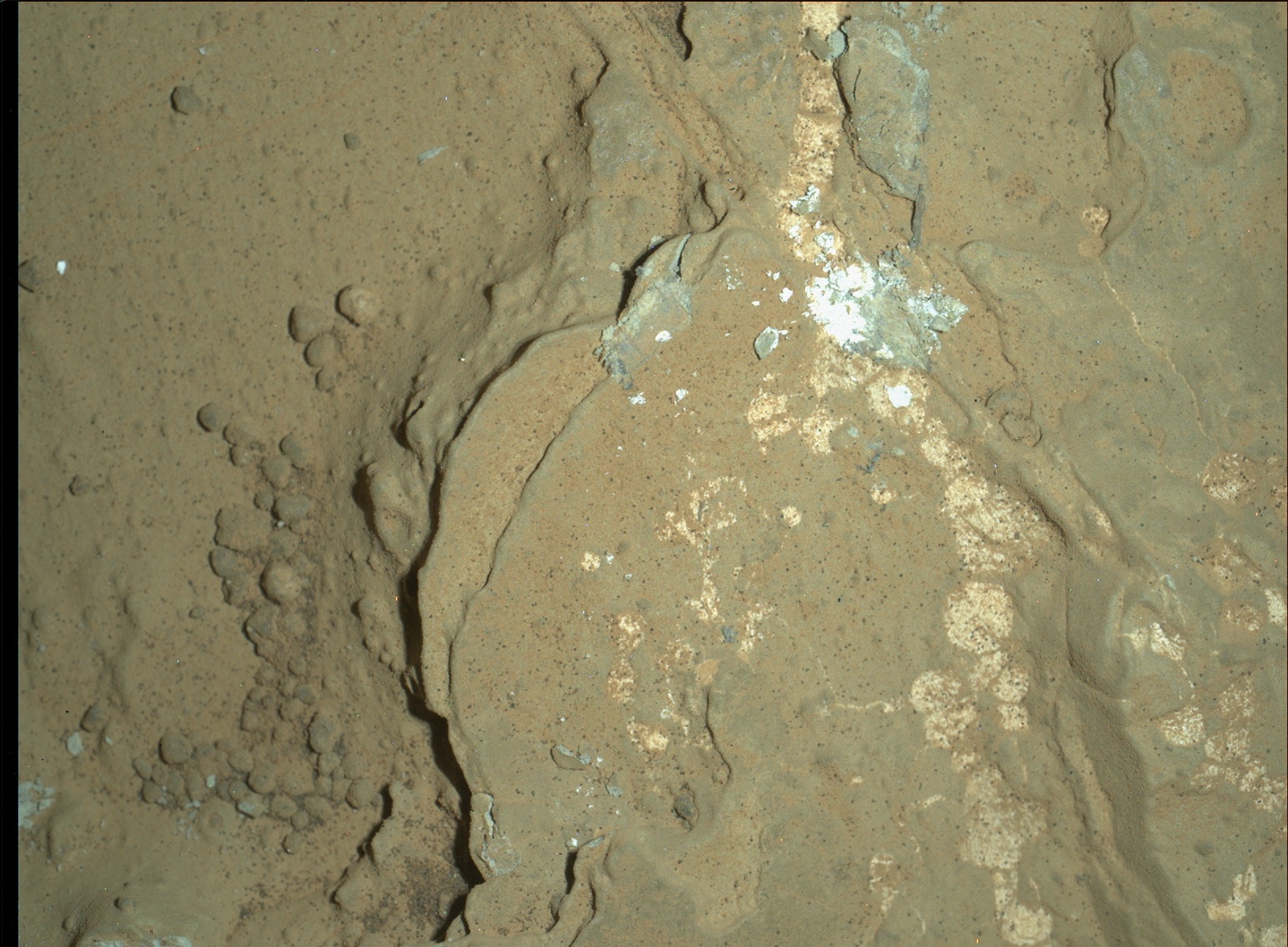I'd like to say this would be a Martian version of zero dark thirty! The mission has achieved yet another milestone by conducting it's first night operations involving use of the Mars Hand Lens Imager or 'MAHLI' in short which also has LED lights like the ones in your modern torches and some old versions of mobile phones. These LEDs produce white light for a white balanced image the way we would see on Earth and ultraviolet light which can be used to elicit fluorescence in the examined material which would indicate the presence of some materials such as calcite, certain gems like rubies and so on.
 |
| A collection of fluorescent minerals under a UV lamp (Commons) |
So here below we have the first 2 images from the start of the session which began 8:26pm local Mars time. It shows the MAHLI calibration tool which also holds the American penny. We see it under the white light LED and under UV which is darker (which brings out the hot pixels effect in the camera which are just areas in the CCD detector producing random noise) and shows a single block of fluorescent mineral in the calibration target.
 |
| White light (NASA/JPL/MSSS) |
 |
| Same scene under UV light (NASA/JPL/MSSS) |
Then MAHLI turned its attention to the dark skies above and took multiple images in different configurations. Most of it is just darkness and noise so I won't bother putting them up. If you aim your camera phone towards the dark sky at night under night-mode, the results would match well with what MAHLI got.
Then MAHLI was aimed at the ground. Curiosity is now parked next to an interesting piece of rock exhibiting interesting patterns of erosion resistant spines protruding out of the softer rocky matrix with veins criss-crossing the whole thing. The veins of white gypsum were the subject of much hubbub since the last mission audio update because it means that this strata of rock may indicate a wet past on Mars together with other pieces of evidence such as an assortment of grains of different sizes in the rocks which may have been deposited under a watery environment.
 |
| Target lit by white LED lamp (NASA/JPL/MSSS) |
 |
| Same scene lit by UV lamp (NASA/JPL/MSSS) |
Simply amazing stuff! The whole operation came to an end at 9:16pm local time.





No comments:
Post a Comment